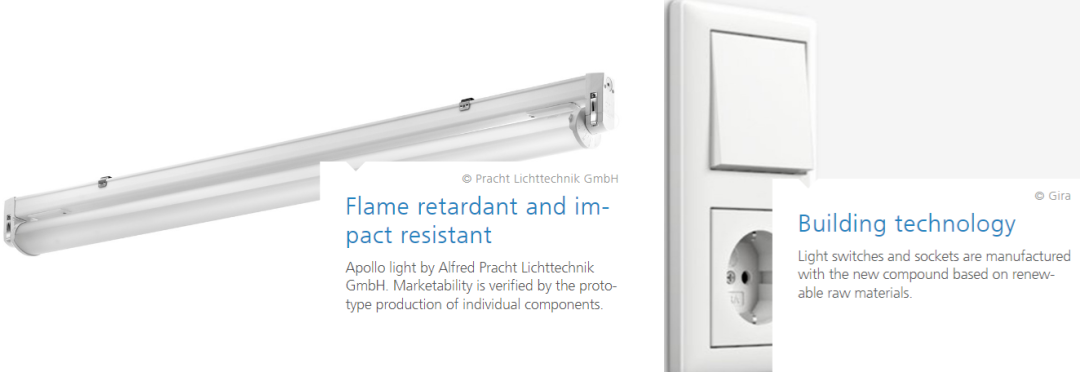Technical components with a higher risk of fire, such as the electronics industry, require flame-, heat- and impact-resistant plastics. A large part of it is produced on the basis of petroleum, the reserves of which are limited. However, bioplastics have often not yet fully achieved the performance levels of conventional engineering plastics demanded by the market. Limitations lie, inter alia, in fire resistance, sufficient temperature resistance or impact strength.
A flame retardant PLA compound (PLA=polylactic acid) was developed by the TechPLastic joint project, Can be used as an alternative to traditional plastics such as ABS (acrylonitrile butadiene styrene copolymer) or PC (polycarbonate) for injection molded parts. The project consortium, coordinated by Fraunhofer UMSICHT, is investigating and optimizing the relevant material weaknesses of PLA. It is designed to achieve a fire rating of UL94-V0, with higher impact strength and a heat deflection temperature exceeding 100°C. At the same time, injection molding process technology is also being tested. The aim is to find economically and technically feasible solutions from a material and process point of view.
PLA compounds for durable products are developed close to the application and the market – taking into account the respective performance requirements and costs. The application focus is initially on technical products from the electronics and construction sector, such as lamps or switches and buttons in building technology.

At the upcoming K 2022, Fraunhofer UMSICHT will present its new bio-based plastics.



 微信扫一扫打赏
微信扫一扫打赏
